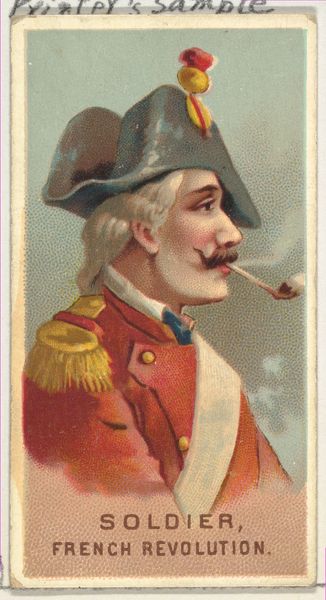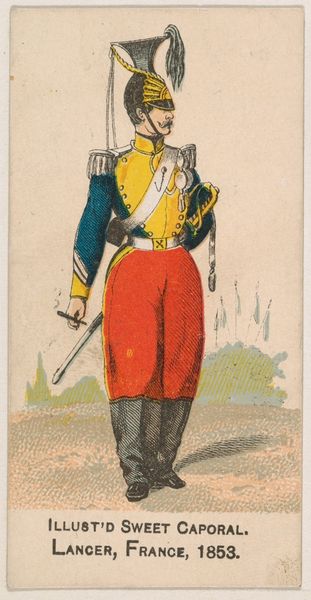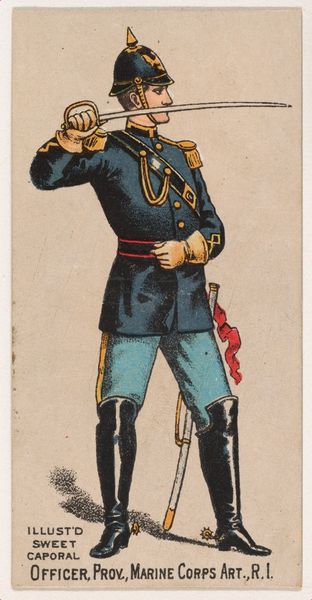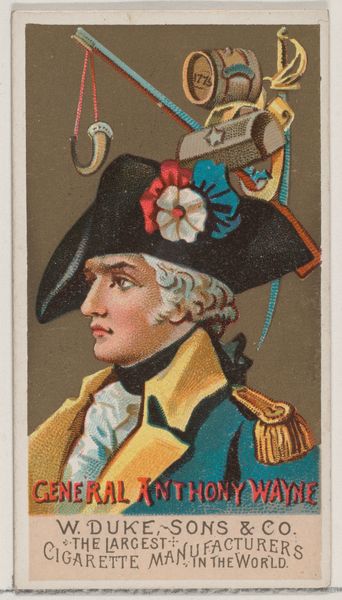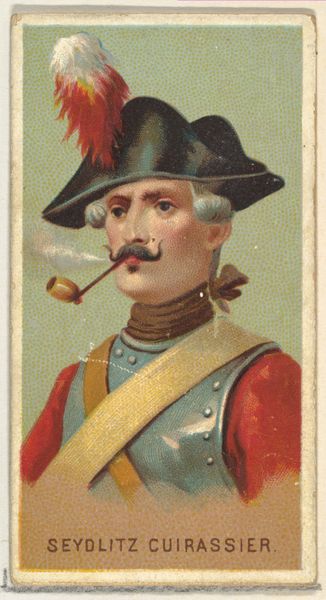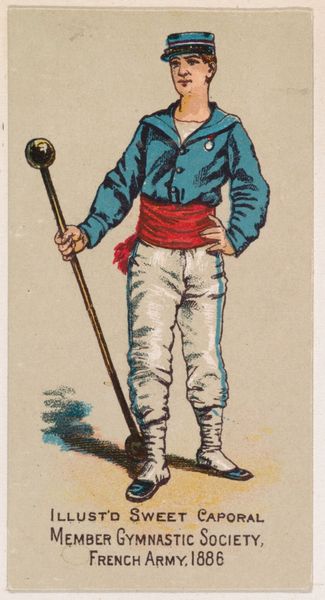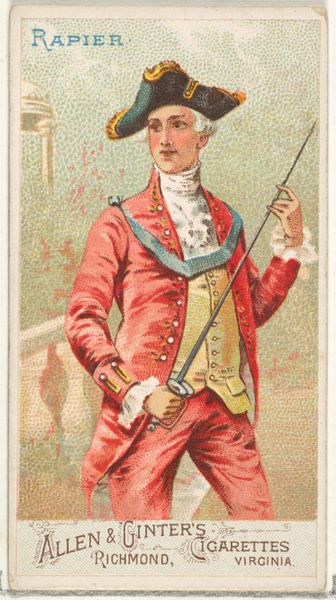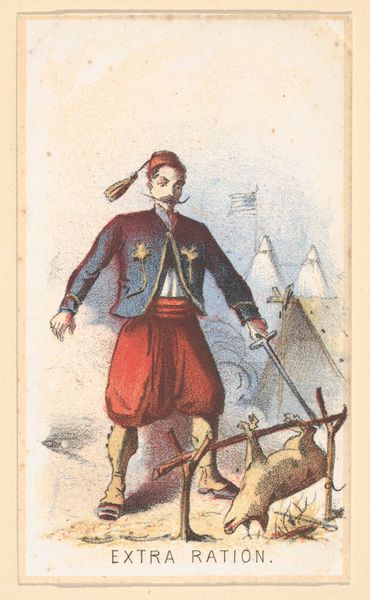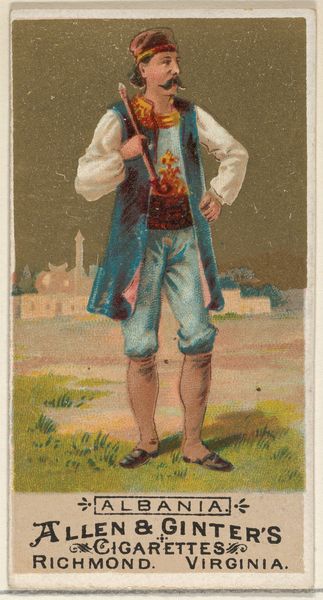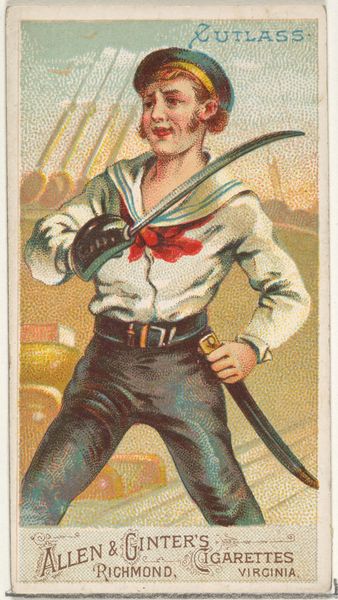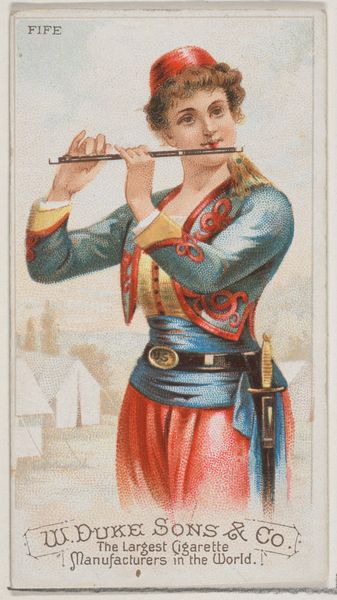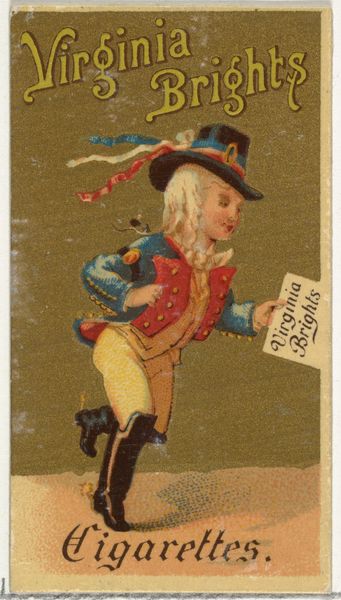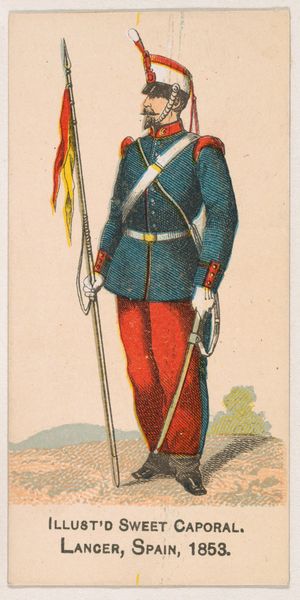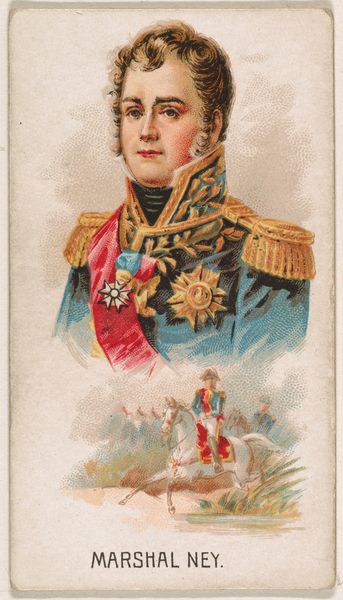
Stede Bonnet, Surrender of Bonnet, from the Pirates of the Spanish Main series (N19) for Allen & Ginter Cigarettes 1886 - 1891
0:00
0:00
drawing, coloured-pencil, print
#
portrait
#
drawing
#
coloured-pencil
# print
#
coloured pencil
#
men
#
history-painting
Dimensions: Sheet: 1 1/2 x 2 3/4 in. (3.8 x 7 cm)
Copyright: Public Domain
Curator: Immediately, the gaze arrests me. There’s something almost… theatrical about his smirk in contrast to the scene’s violence. Editor: Indeed. We’re looking at “Stede Bonnet, Surrender of Bonnet,” a print, and a history-painting portrait no less, dating between 1886 and 1891. The firm Allen & Ginter created this artwork, and this belonged to their *Pirates of the Spanish Main* series of cigarette cards. Curator: Ah, the intersection of commodification and the romanticization of piracy! Makes perfect sense within the larger project of American myth-making, and solidifying notions of criminality. This romantic view of the ‘gentleman pirate’—Stede Bonnet, front and center, despite the bodies strewn around him—obscures the very real violence and exploitation that piracy entailed. The rosy cheeks in stark contrast to all the death is something, isn't it? Editor: Well, these cards circulated widely. And the sensationalized depiction likely contributed to the construction of popular historical narratives and cultural identity. Note, the colour choices and line quality, particularly with the coloured pencils, feel distinctly late 19th century, yet attempt at high realism in capturing expressions is undermined by its inherent function as an advertisement tool.. The scene almost feels stagey, like you said. But it's so calculated! Curator: Right. Think of it like a commercial break packaged as educational history— reinforcing societal power dynamics in the most digestible format. It’s a subtle but pervasive form of indoctrination through these collectible cards—these ‘gifts’ included with a commodity already burdened with its own violence. Editor: A compelling point. We're essentially witnessing the making of legend through everyday ephemera, packaged with tobacco products—a very specific circulation vector deeply enmeshed with socio-economic power dynamics, race, gender, you name it. It all shapes not only the reception of art, but how stories are retold to the masses! Curator: Ultimately, this speaks to the complex, and often problematic, relationship between historical memory, commerce, and cultural representation. It demands that we interrogate not just what stories are being told, but who gets to tell them, and why. Editor: Precisely. It urges a broader critical understanding of the power structures shaping our collective consciousness through the very visual culture we passively ingest every day.
Comments
No comments
Be the first to comment and join the conversation on the ultimate creative platform.
